What is Lead Sheet Notation?
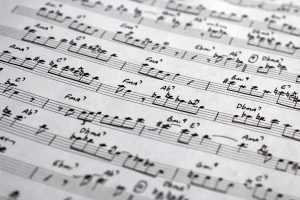
If you have any experience performing jazz, or any other style of popular music, you’re probably familiar with the concept of lead sheet notation. If you’re not yet familiar, chances are you will encounter a lead sheet at some point in the future. In the world of songbook form, lead sheets are commonplace. So, what does someone mean when they ask you if you’re cool reading from a lead sheet? What’s the difference between lead sheet notation and the traditional notation that most musicians are familiar with?
A lead sheet is a sort of bare bones sketch of a piece of music. It’s not as developed or complete as a full score arrangement. It contains the essential elements needed for a piece of music to be performed and nothing more. In order to turn a lead sheet into a performance, arranging or improvisation is required. In simple terms, a lead sheet contains the lead part to a given piece of music.
Components of a Lead Sheet
What are these ‘essential elements’ needed for a piece of music to be performed? What are the main components that make up a lead sheet? Lead sheet notation is the most basic form of a piece of music. It contains the melody, the harmony, the rhythm, and (if the song has them) the lyrics.
- Melody: The majority of lead sheets contain only one staff, written in standard Western music notation. The melody and rhythm are written out in their simplest and straightest forms, with no embellishments or alterations.
- Chord Symbols: The harmony is written above the staff in the form of chord symbols. Chord symbols can vary slightly from lead sheet to lead sheet. Like the melody, the chords are usually written in their most basic form unless the music calls for a very specific chord. Some of the most common chord symbols you’ll see are: major (M), minor (m), diminished (o), major7 (M7, Δ7), minor7 (m7, -7), dominant7 (7), diminished7 (o7), half-diminished7 (ø7), and augmented (+). Certain lead sheets may have guitar chord notation alongside the chord symbols. Some lead sheets may also have a second staff with a bass line or a harmony line if it is a necessary part of the arrangement.
- Lyrics: If a song has lyrics, the text is written below the melody staff. The lyrics are broken up into syllables. Each syllable is placed directly under the corresponding note. Sometimes one syllable will be stretched over more than one note.
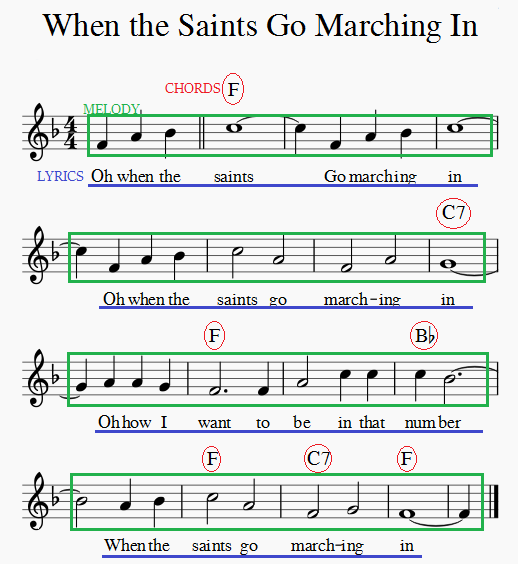
What’s Not Part of a Lead Sheet?
As stated above, lead sheet notation only contains the most basic parts of a piece of music. So, what does a lead sheet not contain? What are some musical elements that are missing from a lead sheet? Simply put, a lead sheet is missing many of the elements of an arrangement. What are some of the components that make up a musical arrangement?
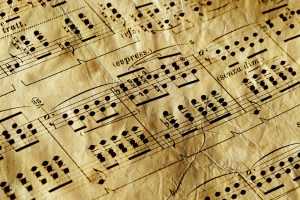 Instrumentation: A lead sheet does not specify any instrumentation. A solo pianist can perform from a lead sheet or a full jazz band can perform from that same lead sheet. Most lead sheets don’t have bass lines or drum parts or harmonies, etc. Instrumental arrangement is open for the arranger or performers to decide.
Instrumentation: A lead sheet does not specify any instrumentation. A solo pianist can perform from a lead sheet or a full jazz band can perform from that same lead sheet. Most lead sheets don’t have bass lines or drum parts or harmonies, etc. Instrumental arrangement is open for the arranger or performers to decide.
Form: A lead sheet has a form in the sense that AABA or AAB or ABAC or ABA are forms. A lead sheet does not, however, have the performance form. If you play a lead sheet through, as written, one time, in a performance setting, that would be a pretty short performance. Usually the form of a tune, as written on the page of a lead sheet, will be played through several times in a performance; play the melody, improvise some, drum solo, play the melody again, etc. In addition, you can add an intro and/or an outro. All of these things can be worked out in under a minute by the performers, or decided upon by an arranger.
Performance Techniques: A lead sheet generally doesn’t have performance techniques, such as dynamics and articulation. These are left open for interpretation. Also, as mentioned above, the melody and rhythm are written out in their straightest forms. If you play from a lead sheet exactly as written on the page, it’s gonna sound pretty square. Performers and arrangers usually embellish and/or alter the melody and rhythm.
Who Uses Lead Sheets?
Why do lead sheets exist? Who is lead sheet notation relevant to? Who uses lead sheets? Who benefits from them? Lead sheets have a wide variety of relevant applications. Musicians of all kinds regularly use lead sheets for various purposes.
Jazz Musicians: Jazz musicians use lead sheets often. If you play any jazz at all, you most likely own at least one of the Real Books. The Real Books (or any fake books) are compilations of several lead sheets. If a jazz musician doesn’t know a tune, they’ll read it from a lead sheet in a rehearsal or performance situation. When jazz musicians compose tunes, sometimes they’ll write them out (at least initially) using lead sheet notation.

Singers/Instrumentalists/Pianists: Lead sheets are used in several other genres of music other than jazz. Lead sheets are used often in popular music by singers or other instrumentalists with piano/guitar accompaniment. Some examples are: a singer performing a song from a Broadway musical with piano accompaniment (or full band accompaniment), a violinist performing holiday songs with piano, or people singing music at church on Sunday from church hymnals.
Composers/Arrangers: Composers of popular music styles will usually write out a lead sheet of their composed tune before they create any complex arrangements. It’s an efficient and effective way to get your basic ideas down on paper. Similarly, arrangers may use lead sheets of existing tunes as a starting point to write an arrangement.
Awards/Copyright: Lead sheets are sometimes used in non-performing and non-composing scenarios. They can be used in awards situations, anything from small songwriting competitions all the way up to the Grammys, for judging purposes. Lead sheets are also used in copyright infringement cases. Comparing two lead sheets side by side is a quick and accurate way to determine if one composer copied another composer’s work.
“When the Saints Go Marching In”
Check out Louis Armstrong and his group performing “When the Saints Go Marching In”. The performance is complex, engaging, and entertaining, but a simple lead sheet contains all the information necessary to execute the performance. The musicians never break the form. Listen to the performance and follow along with the provided lead sheet. There is a brief drum intro at the top, but after that, the form is played straight through, repeating itself several times. (Note that the chords in the video are slightly different than on the provided lead sheet, as is the prerogative of the performers).
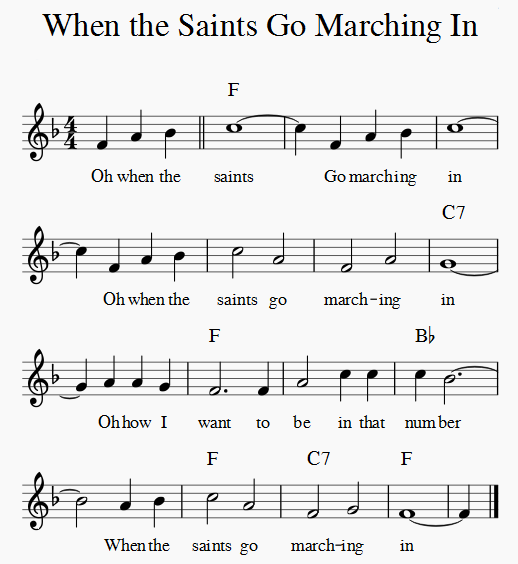
Search for “When the Saints Go Marching In” on YouTube. There are plenty of audio and video examples of other performances. Listen to a bunch of them and compare them all. They all sound different, but they all have the same essential elements that lead sheet notation provides. The lead sheet provides the basis for the performers to create a complex arrangement out of. Some recordings are more arranged and some less so, but they all have commonalities.
Conclusion
As a jazz musician, I read from lead sheets all the time; probably more than I read from actual arranged charts. I’ve also had to use lead sheet notation to arrange charts for ensembles. Eventually, as a jazz or pop musician, you should know hundreds (or thousands) of tunes, so you don’t have to read from lead sheets. But there are always going to be tunes called that you don’t know. Or someone is going to bring in a tune they composed, in lead sheet form. In these cases, it’s important to understand lead sheet notation.


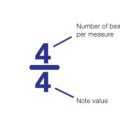
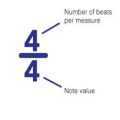

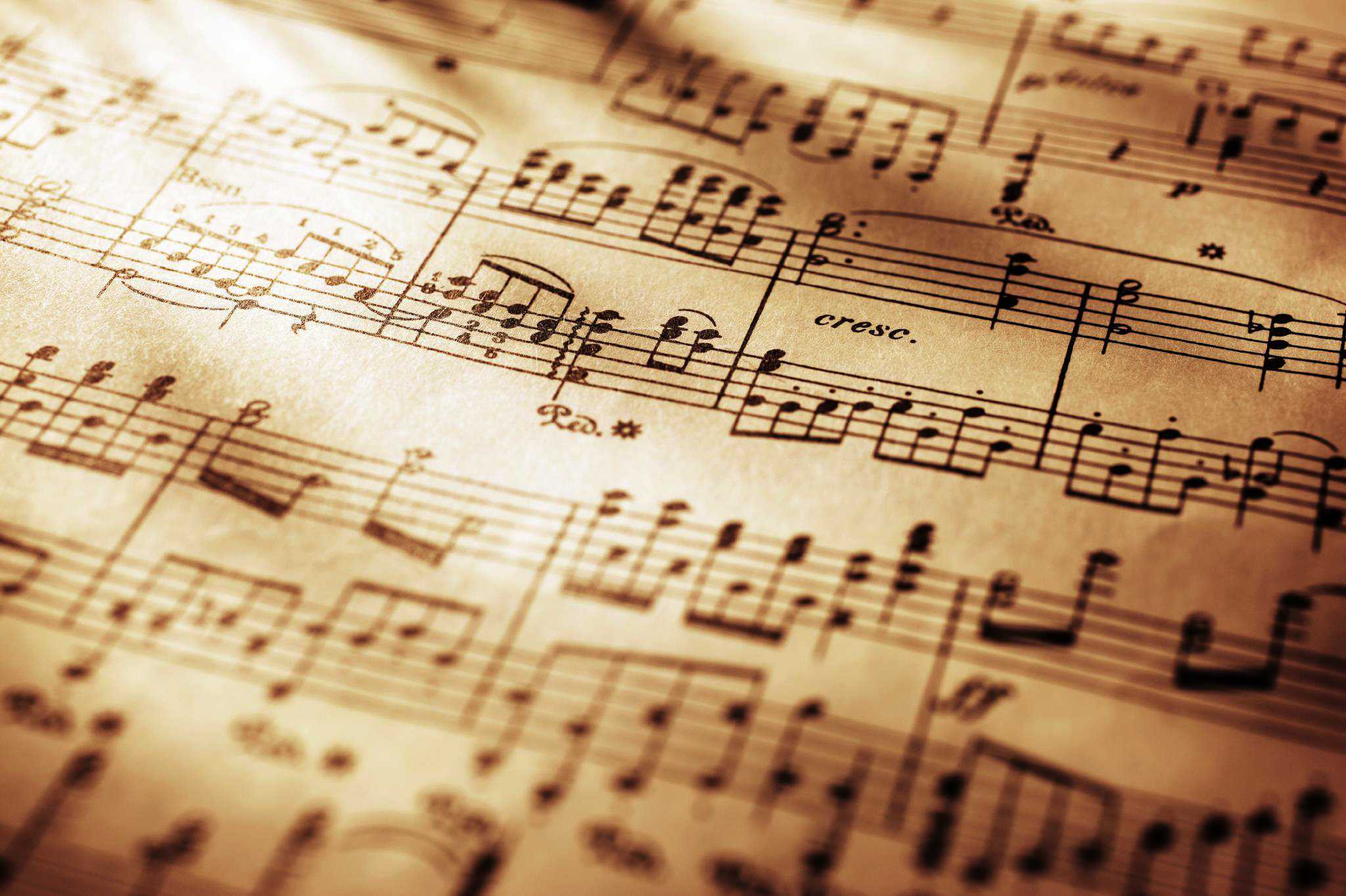
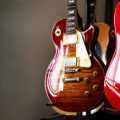

Lead sheet music…. a bit complicated and honestly overwhelming in the beginning but once you get into it, it's not so hard – especially if you know the basics. I had a good time reading this, it was pretty eye opening.
how do I notate an instrumental break (in the sense of the band playing something in unison) and distinguish it from the vocal line with lyrics if there's only on staff?
Thanks!
Pol